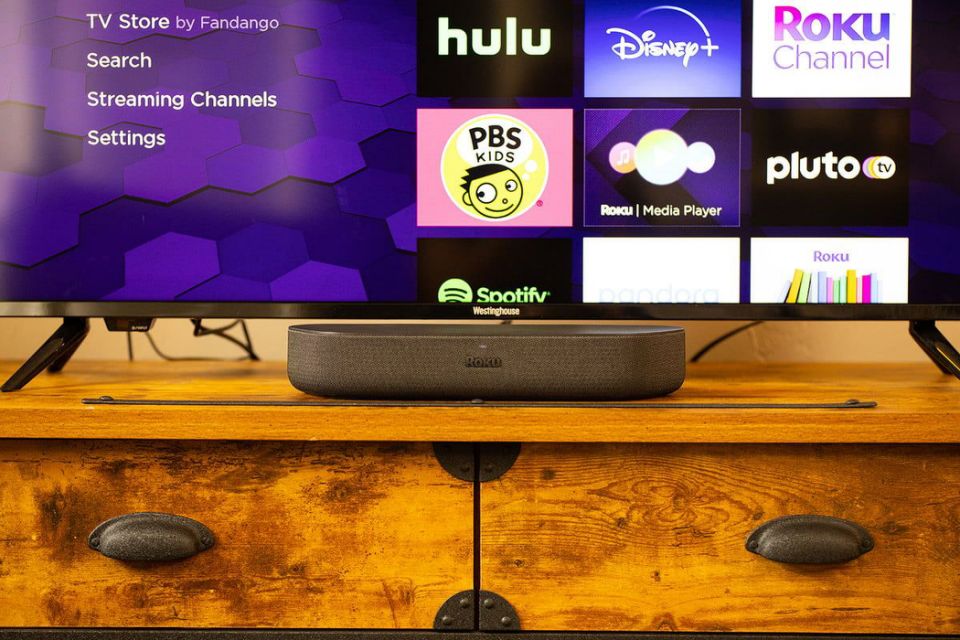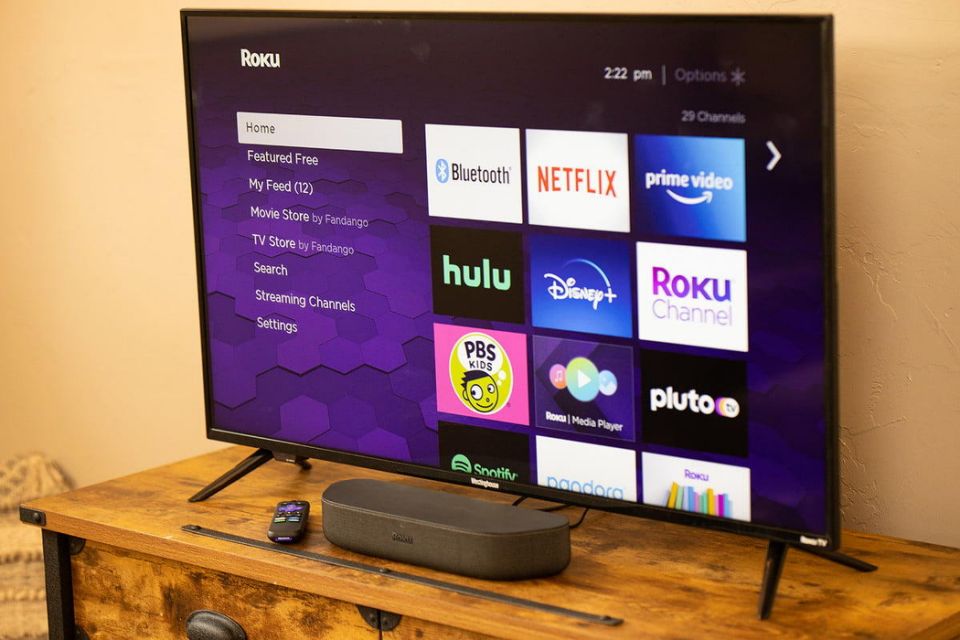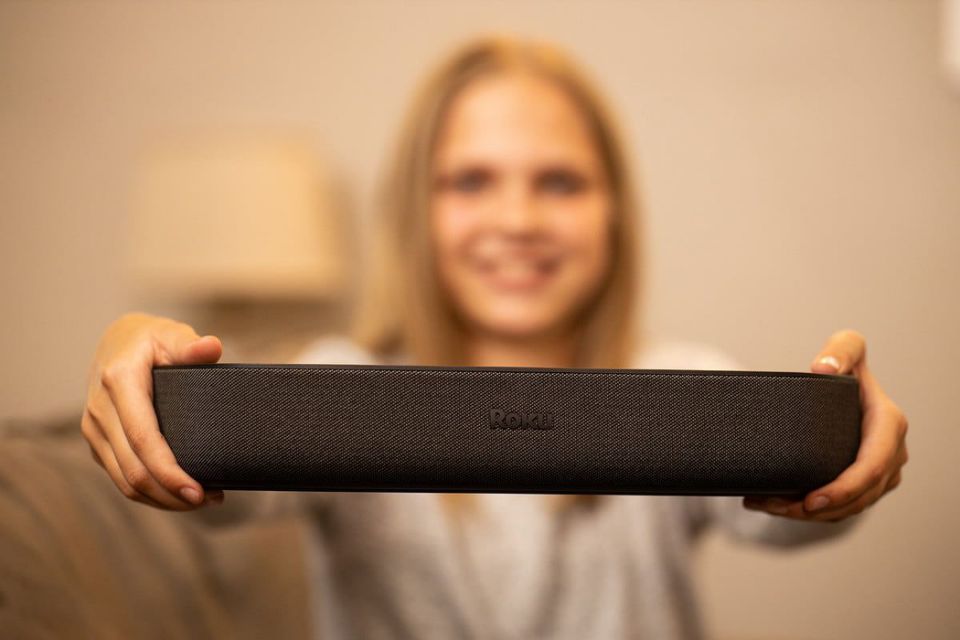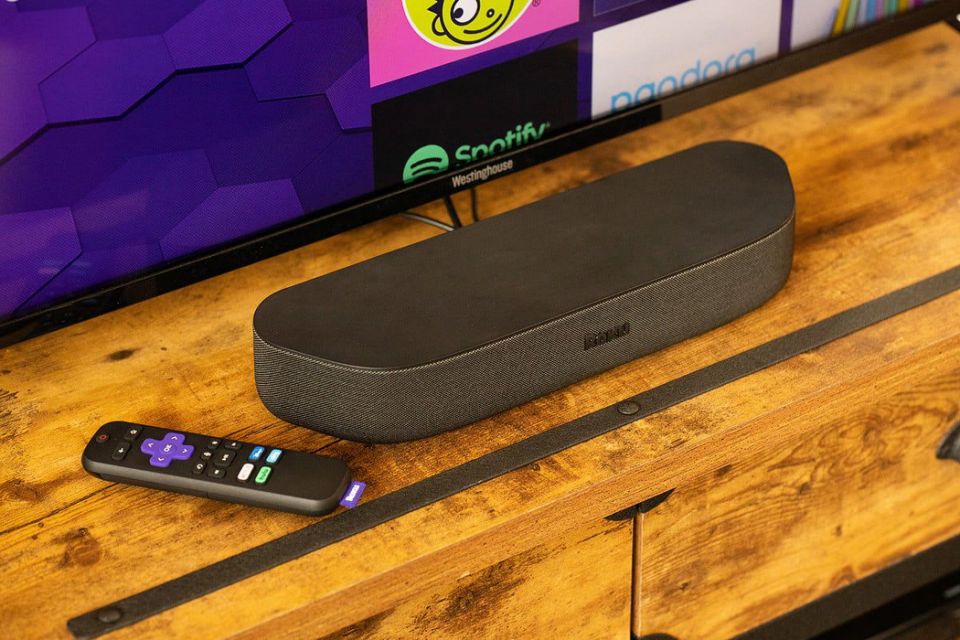I have a friend who lives in Manhattan and enjoys the minimalist aesthetic. Though he could live in a larger space, he always chooses to keep his living quarters small. For the past 10 years, he’s opted for a cozy studio apartment on the Upper West Side. As you can imagine, he has limited space and has fully embraced the movement of ditching cable. He doesn’t even own a TV.
But just because he ditched cable doesn’t mean he is ignoring multimedia content. Instead of a TV, he uses his computer. His entire entertainment space is just his desk. It’s people like him that I think the Roku Streambar is built for. This is a compact speaker that is also a great 4K streamer, and can fit well into any space.

It’s small
The Streambar isn’t Roku’s first speaker/player 2-in-1 — the Roku Smart Soundbar came first. But while being a 2-in-1 is a big reason the Streambar is so compelling (we’ll get to that shortly), to appeal to the audience of compact-living minimalists, it first has to pass the litmus test of being small.
If you’re living in a studio apartment or a dorm room, a typical soundbar is not going to fit on your desk. The Streambar is not your typical soundbar, however. It’s only 14 inches long and 2.4 inches tall. That’s downright tiny, and will absolutely fit on even the smallest desks, nestled cleanly right below a monitor.
A better viewing experience
If you’re using your PC to stream your favorite shows and movies, you know it’s only good if you’re sitting at your desk. If you decide to rotate your monitor to face the bed, or sit down on a couch across the room, navigating the experience with a mouse becomes tedious.
There is no replacement for a good remote, and Roku’s remote and interface are among the best. Rather than settling for the subpar browser-based viewing experience that those who stream from their desktops often deal with, the Roku Streambar offers a compelling dual-function device option.

The Streambar isn’t going to give the highest level of viewing experience Roku has to offer, but for this application, that’s not necessary. The new Roku Ultra added Dolby Atmos and Dolby Vision support, but that is a feature someone living in a dorm room won’t even want. Their monitor won’t likely support Vision and it’s unlikely they have a sound system that supports Atmos — 4K stream quality and Roku’s interface is all they need.
I’m not sure I could convince someone who has been streaming from their desktop that the Roku Streaming Stick or the Roku Ultra would be a good use of their HDMI port, but the Streambar is more than a player. It’s a speaker.
Better than stock speakers
While there are a lot of good speaker options out there, not everyone really cares about high-quality audio. For most, headphones and a Bluetooth speaker is all they ever need. Bookshelf speakers like the Harman Soundsticks 4 are too large or cumbersome to deal with in a small space or on a small desk.
All the Roku Streambar has to do is be better than what comes stock with a device. It’s certainly better than what you get with most monitors or laptops, and will take up considerably less space than bookshelf or traditional computer speakers. If you’re going for that minimalist look and also improved sound quality, the Streambar fits the bill.
Better yet, it’s not just a TV speaker. It can be your computer speaker and music player, too. For some, it can even be a gaming soundbar.

Multifunctional
The Roku Streambar supports one HDMI out, one digital optical input, and Bluetooth (with Spotify Connect compatibility).
In the case of my New Yorker friend, the HDMI input to his monitor and the connection to sound via Bluetooth to his computer would satisfy all his needs. Most monitors come with at least two input options (either two HDMI or one HDMI and a DisplayPort), which is all you would need to connect to both your PC and the Streambar at the same time. For my friend, and people like him, this is perfect.
While Bluetooth is plenty for music or YouTube videos, it will have far too much latency to be appealing for many games. If your computer happens to support a digital optical connection, though, you’re in business. The Streambar would work great for gaming.
It still remains to be seen how PC gamers respond to suddenly having the option to buy a soundbar specifically for gaming, but manufacturers seem to think the idea is going to take off. And while the Roku Streambar isn’t as suited for gaming as the Panasonic Soundslayer is (it comes with two HDMI ports so that you don’t have to worry about that Optical or Bluetooth connection choice), it still has its uses.
It’s cheap
I think the most compelling reason the Roku Streambar makes sense for small spaces like studio apartments or dorm rooms, other than its compact size, is that it’s cheap. You get both a four-driver speaker and a 4K Roku player for $129. The aforementioned Panasonic Soundslayer is only a soundbar, and costs $300. Yamaha’s SR-C20A is a bit easier to swallow at $180, but is probably still too large for small spaces. From a value perspective, Roku has Panasonic and Yamaha beat even if the Soundslayer or the C20A produce better audio.
Roku has a real winner when it comes to a major value-add for folks who are living in small spaces.

Roku is positioning the Streambar to be yet another choice for the many traditional living rooms that are out there, and that’s smart. But I believe it’s better positioned for those who live in an apartment or small house and never considered a streaming player before because they don’t own a TV. For them, the Streambar makes a lot more sense.




